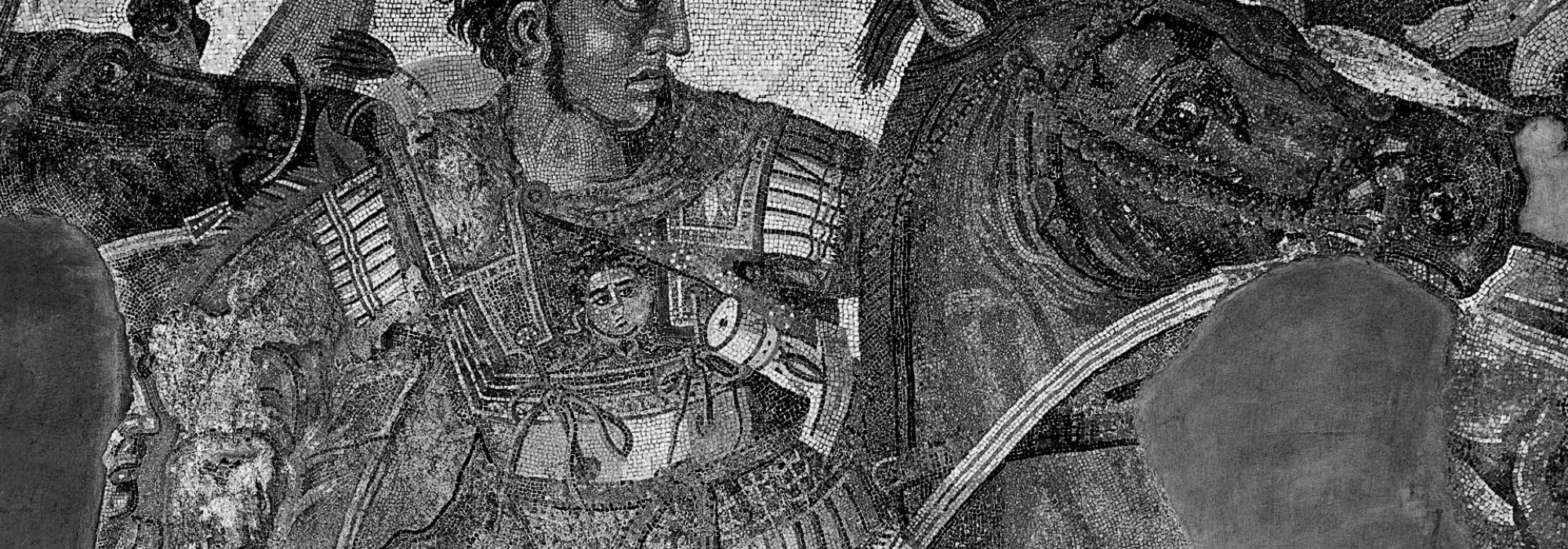The Influence of Alexander
(continued)
When a great emperor decentralizes a vast kingdom, if he doesn’t use his absolute sovereignty to establish friendly relationships and maintain constant communication with all the regions, if he doesn’t keep his eyes and ears open all the time, his empire will collapse. We get examples for this in Ashoka’s time itself. Why, even in the case of the ambitious Alexander who set out to conquer the world and establish an enormous empire, his sovereignty had an untimely end.
[contextly_sidebar id="nHhLBMvZ6azOSeBhfX8nLWVy9nTxRomA"]At any rate, if Alexander’s invasion resulted in the defeat of some parts of India, the reason for it was the shortcoming of the system of republics and not the failure of the brilliance of kshaatra of the Vedic tradition.
In the Vedic tradition, there is the idea that however big a share the citizens have, the king is the supreme. Here too, we are reminded of the story of Vena, an evil king. At one point, his oppressed subjects were so furious that they removed him from the throne. But a kingdom cannot last without a king and without any alternatives, they reinstated him. After this, Vena became all the more overbearing and continued in his evil ways. Finally, unable to put up with his cruelty, all the rishis got together and destroyed him. They established his (Vena’s) son Prithu on the throne. Under Prithu, there was abundance and prosperity. The story goes that he milked the earth that had taken the form of a cow. [Here, ‘milked’ merely refers to the act and doesn’t have a negative connotation of exploitation.] The earth felt that people’s welfare will be affected during the reign of an evil king like Vena; she felt that she should not come under the sovereignty of an evil king and that she should not bring comfort to those who supported him; a great fear engulfed her and she swallowed all the seeds that were planted in the ground, lest she help this evil king. The earth became complete sterile and arid. It was Prithu who then made the land fertile and worthy of agriculture. He enlivened all the resources. Thus, whenever an establishment decays or crumbles, there should always be an alternative.
As much freedom as one needs, one also needs that much of restraint and constraint. Whoever it may be, only when one honors the constraints will one get the facilities. Absolute freedom, pure anarchy, and uninhibited lust are never useful in the long run. We learn this lesson upon observing Alexander’s attack on India. Paurava (‘Porus’ according to Greek accounts) lost to Alexander. It is said that Paurava too was the head of a republic but there is some uncertainty in this matter. There are stories that Alexander treated him like a friend. One is unsure as to how much one can believe the Greek accounts. In sum, we see that Alexander befriended Paurava and retained his honor. But he left back his army and his generals at Bactria (what we call as ‘Bahlika Desha’) and in some places (like modern-day Balochistan, Afghanistan, Kandahar, etc.), he nominated his successors. He died while on his conquest. We know that Ambhi of the Madra country was completely surrendered to Alexander. In this manner, by friendship, by politics and statecraft, and by sheer warfare, Alexander won over many. We now come to the end of his story.
Translated from the original Kannada by Hari Ravikumar. Translator's notes in square brackets.

















































